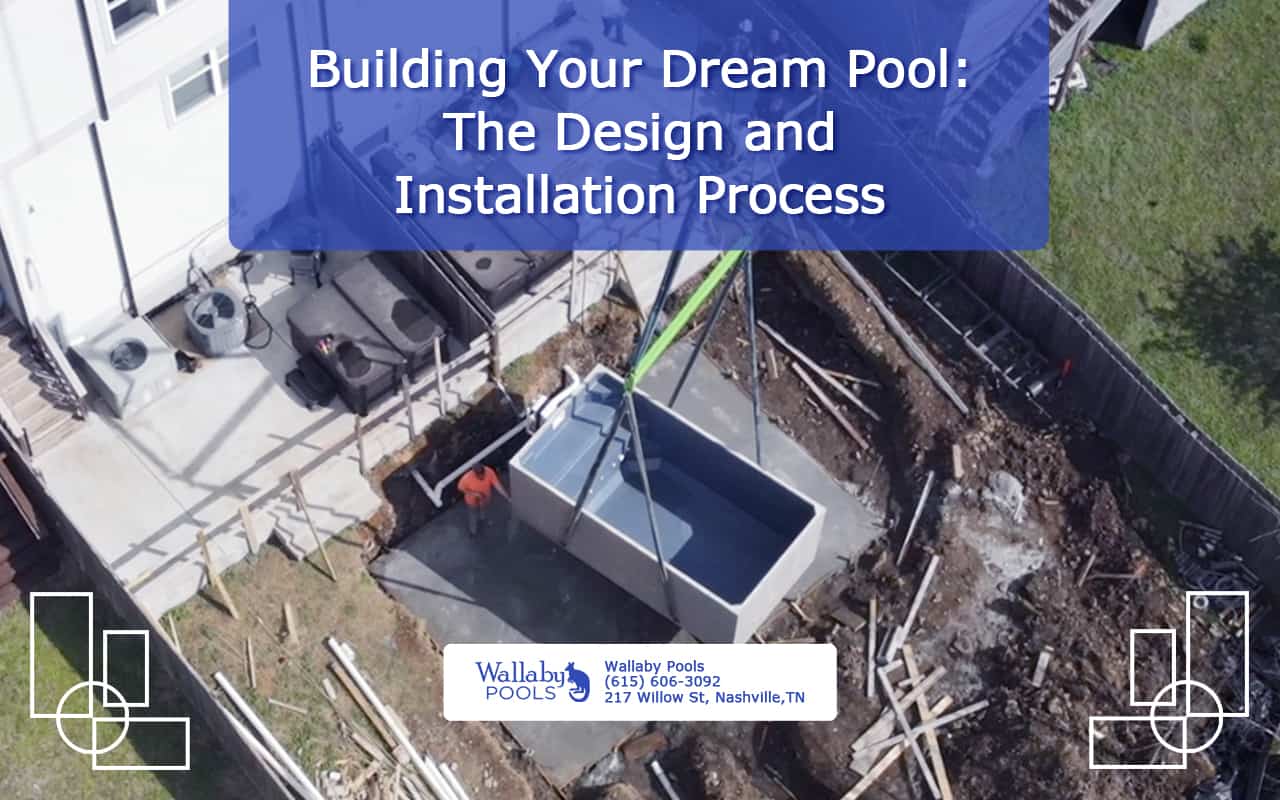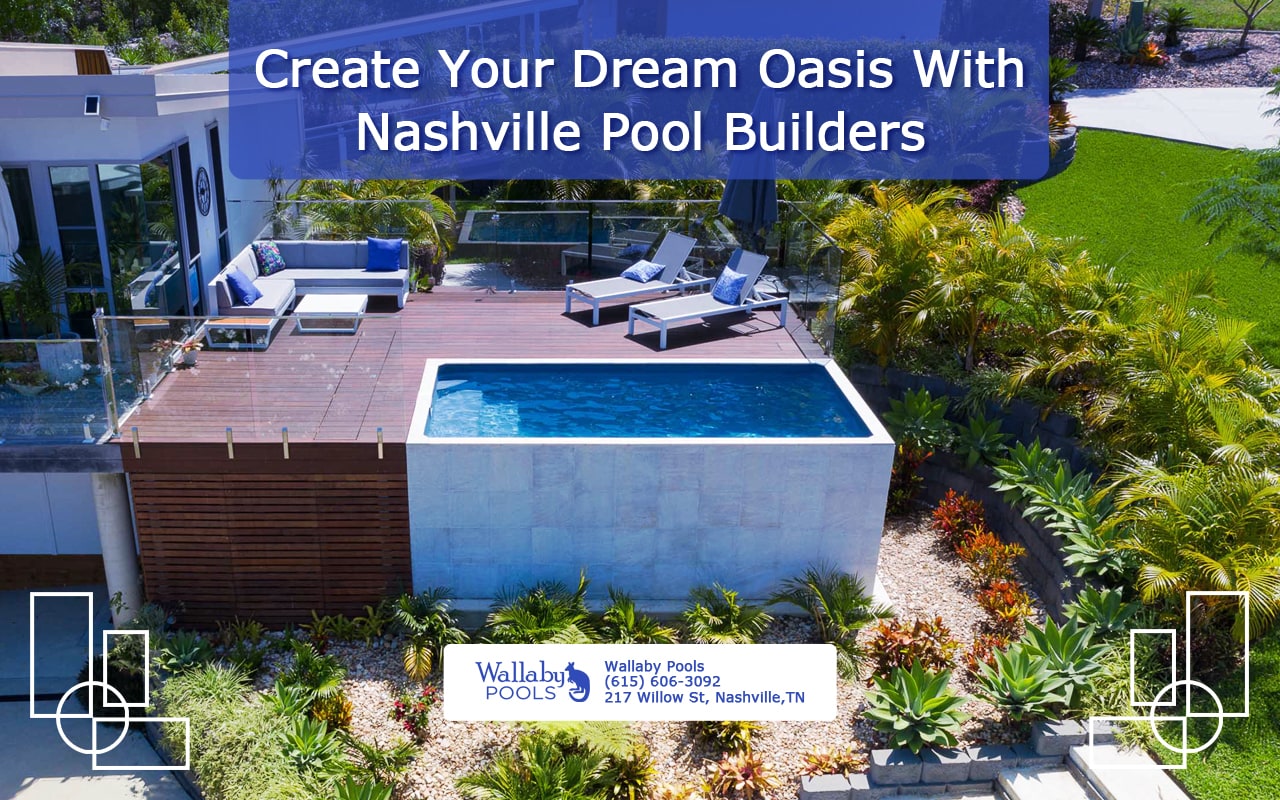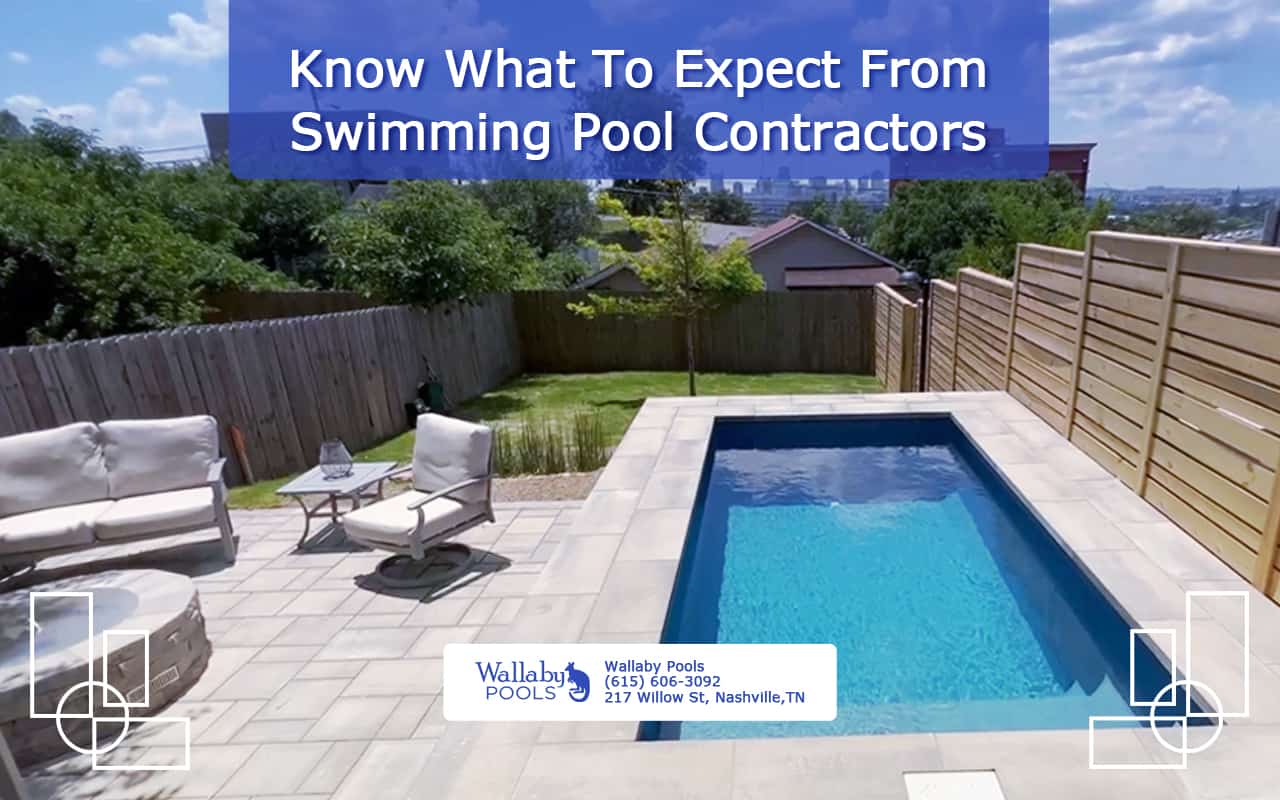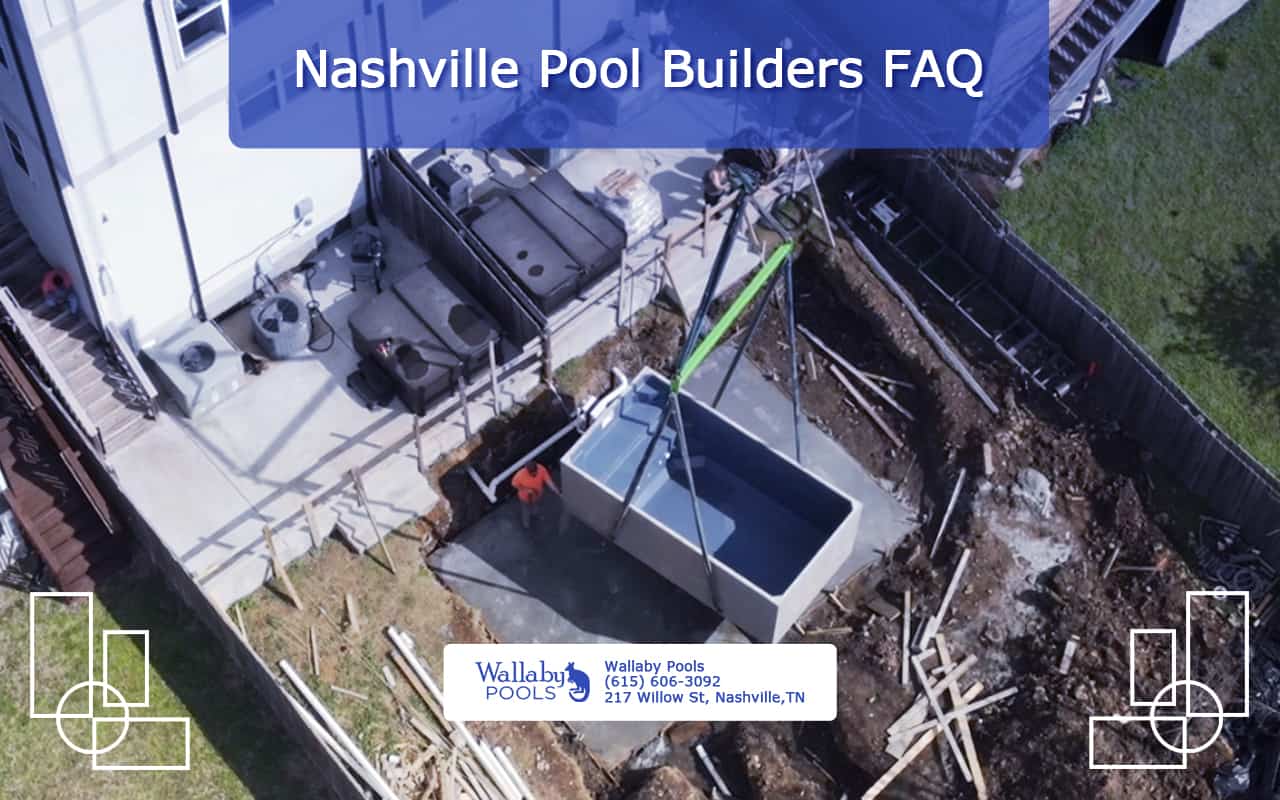

"The materials used in pool construction significantly impact the project's overall cost. Though the initial investment may be higher, the long-term savings on utility bills and the reduction in carbon emissions make solar energy a practical and sustainable choice for pool owners." "Enhancing pool insulation can significantly improve energy efficiency by reducing heat loss and lowering heating costs. While both types of pools can benefit from efficient filtration systems and durable materials, the selection of features is tailored to meet the distinct needs of private homeowners versus public facilities."
Using a variable-speed pump and advanced filtration systems reduces the need for frequent backwashing, saving thousands of gallons annually. Best pool installer nashville TN. By adopting these sustainable heating solutions, pool owners can enjoy warm water while protecting the planet." Best nashville pool builders TN.
Natural materials like stone or locally sourced aggregates minimize the carbon footprint associated with shipping and manufacturing.
"The choice between saltwater and chlorine pools often comes down to maintenance preferences, initial costs, and personal comfort. Simpler designs, like rectangular or kidney-shaped pools, are generally more affordable and quicker to build. Some homeowners opt for beach-entry designs that provide a gradual slope, creating a natural and accessible entry point. By incorporating these energy-saving measures, you'll enjoy lower utility bills and a more environmentally friendly pool."
"The complexity of your pool's design can significantly impact its overall construction costs. Once the old surface is stripped away, the pool's structure is thoroughly cleaned and prepped.
Freeform or kidney-shaped pools blend naturally with landscaped areas and offer a more organic appearance. Professional installation ensures that all connections are secure and that the system is optimized for the best energy performance."
Residential pools typically need weekly cleaning, chemical balancing, and occasional filter maintenance. Bigger pools often demand more extensive excavation, additional plumbing, and larger filtration systems, all of which contribute to higher expenses. The non-porous material resists algae growth and requires fewer chemicals, saving both time and money. "If your pool warranty claim is denied, the first step is to review the rejection letter and warranty terms carefully.
Routine tasks such as skimming debris, vacuuming, and brushing the walls prevent buildup and maintain water clarity. Gathering additional documentation, such as maintenance logs or photos, can strengthen your case.
Consider the layout, ensuring there's enough room for loungers, tables, and walkways. By understanding the characteristics of each type, you can choose the pool that best fits your needs and lifestyle."
Regular maintenance can help prevent major issues, but if repairs are needed, getting multiple quotes from reputable contractors can ensure fair pricing.


They're also subject to regular health department inspections and must maintain detailed maintenance records. Consider their communication style and responsiveness, as these traits often indicate how smoothly the project will proceed. Key questions include: “How long have you been in business?” “Are you licensed and insured?” “Can you provide references from previous clients?” “What is your estimated timeline for this project?”
"Constructing a commercial pool involves higher costs than residential pools due to larger sizes, enhanced filtration systems, and compliance with strict regulations. Over the long term, these investments pay off financially and help reduce your environmental footprint." Solar-powered lights are energy-efficient and eco-friendly, making them an appealing choice for environmentally conscious homeowners. Before hiring a contractor, request a copy of their warranty policies and ask questions to ensure you're fully aware of what's covered and for how long."
In addition to these in-ground options, above-ground pools offer a more affordable and temporary solution. Following these steps helps you make the most of your pool warranty, protecting your investment and ensuring a smooth resolution for any covered issues."
"Building a pool often requires permits and inspections, which can add hundreds to thousands of dollars to the project's overall cost. Determine whether you need a pool for exercise, family fun, or relaxation, as this can influence the type and features you choose.


By taking a comprehensive approach, you'll have a clearer understanding of the full financial commitment and can plan accordingly." "Pool construction costs vary widely depending on the chosen method. Additionally, maintaining a balanced water chemistry can reduce strain on both the filter and pump, allowing them to operate efficiently and extend their lifespan." "A water-conserving pool design incorporates features that reduce evaporation, minimize water waste, and ensure efficient use.
By following these guidelines, pool builders create safe environments that reduce accidents and foster enjoyable experiences for everyone." "Investing in energy-efficient pool equipment and features can lead to significant savings and environmental benefits over time.
Equipment issues, such as a noisy pump or a leaking filter, should be inspected and repaired promptly. If you plan to add features like a spa, lighting, or a waterfall, factor those into the overall budget.
By staying consistent and using efficient systems, homeowners can keep their pool maintenance costs under control while extending the pool's lifespan." Additionally, modern pool slides are designed with safety features such as non-slip surfaces and sturdy handrails, ensuring that everyone can enjoy them with peace of mind." Commercial pools, however, demand more frequent testing, daily cleaning, and robust filtration schedules to handle constant bather loads. Positive feedback from multiple clients indicates that the contractor consistently delivers satisfactory results.

|
This article needs additional citations for verification. (July 2010)
|
Salt water chlorination is a process that uses dissolved salt (1000–4000 ppm or 1–4 g/L) for the chlorination of swimming pools and hot tubs. The chlorine generator (also known as salt cell, salt generator, salt chlorinator, or SWG) uses electrolysis in the presence of dissolved salt to produce chlorine gas or its dissolved forms, hypochlorous acid and sodium hypochlorite, which are already commonly used as sanitizing agents in pools. Hydrogen is produced as byproduct too.
The presence of chlorine in traditional swimming pools can be described as a combination of free available chlorine (FAC) and combined available chlorine (CAC).[1] While FAC is composed of the free chlorine that is available for disinfecting the water, the CAC includes chloramines, which are formed by the reaction of FAC with amines (introduced into the pool by human perspiration, saliva, mucus, urine, and other biologics, and by insects and other pests).[2] Chloramines are responsible for the "chlorine smell" of pools, as well as skin and eye irritation. These problems are the result of insufficient levels of free available chlorine, and indicate a pool that must be "shocked" by the addition of 5–10 times the normal amount of chlorine.[1] In saltwater pools, the generator uses electrolysis to continuously produce free chlorine. As such, a saltwater pool or hot tub is not actually chlorine-free; it simply utilizes added salt and a chlorine generator instead of direct addition of chlorine. It also burns off chloramines in the same manner as traditional shock (oxidizer). As with traditionally chlorinated pools, saltwater pools must be monitored in order to maintain proper water chemistry. Low chlorine levels can be caused by insufficient salt, incorrect (low) chlorine-generation setting on the SWG unit, higher-than-normal chlorine demand, low stabilizer, sun exposure, insufficient pump speed, or mechanical issues with the chlorine generator. Salt count can be lowered due to splash-out, backwashing, and dilution via rainwater.

Research has shown that because saltwater pools still use chlorine sanitization, they generate the same disinfection byproducts (DBPs) that are present in traditional pools. Of highest concern are haloketones and trihalomethanes (THMs) of those the predominant form being bromoform. Very high levels of bromoform—up to 1.3 mg per liter, or 13 times the World Health Organization's guideline values—have been found in some public saltwater swimming pools.[3]
Manufacturers have been producing saltwater chlorine generators in the United States since the early 1980s, and they first appeared commercially in New Zealand in the early 1970s (the Aquatech IG4500).[4]
The chlorinator cell consists of parallel titanium plates coated with ruthenium and sometimes iridium. Older models make use of perforated (or mesh) plates rather than solid plates. Electrolysis naturally attracts calcium and other minerals to the plates. Thus, depending on water chemistry and magnitude of use, the cell will require periodic cleaning in a mild acid solution (1 part HCl to 15 parts water) which will remove the buildup of calcium compound crystals, such as calcium carbonate or calcium nitrate. Excessive buildup can reduce the effectiveness of the cell. Running the chlorinator for long periods with insufficient salt in the pool can strip the coating off the cell which then requires an expensive[clarification needed] replacement, as can using too strong an acid wash.
Saltwater pools can also require stabilizer (cyanuric acid) to help stop the sun's UV rays from breaking down free chlorine in the pool. Usual levels are 20–50 ppm. They also require the pH to be kept between 7.2 and 7.8 with the chlorine being more effective if the pH is kept closer to 7.2. The average salt levels are usually in the 3000-5000 ppm range, much less than the ocean, which has salt levels of around 35,000 ppm.[5] In swimming pools, salt is typically poured across the bottom and swept with the pool brush until it dissolves; if concentrated brine is allowed into the return-water system it can cause the chlorinator cell to malfunction due to overconductivity.
Salt water chlorination produces an excess of hydroxide ions, and this requires the frequent addition of hydrochloric acid (HCl, also known as muriatic acid) to maintain pH.[6]
The benefits of salt systems in pools are the convenience and the constant delivery of pure chlorine-based sanitizer. The reduction of irritating chloramines versus traditional chlorinating methods and the "softening" effect of electrolysis reducing dissolved alkali minerals in the water are also perceived as benefits. For some people that have sensitivities to chlorine, these systems may be less offensive.
Disadvantages are the initial cost of the system, maintenance, and the cost of replacement cells. Salt is corrosive and will damage some metals and some improperly-sealed stone. However, as the ideal saline concentration of a salt-chlorinated pool is very low (<3,500ppm, the threshold for human perception of salt by taste; seawater is about ten times this concentration), damage usually occurs due to improperly-maintained pool chemistry or improper maintenance of the electrolytic cell. Pool equipment manufacturers typically will not warrant stainless steel products damaged by saline pools. Calcium and other alkali precipitate buildup will occur naturally on the cathode plate, and sometimes in the pool itself as "scaling". Regular maintenance of the cell is necessary; failure to do so will reduce the effectiveness of the cell. Certain designs of saline chlorinators use a "reverse-polarity" method that will regularly switch the roles of the two electrodes between anode and cathode, causing this calcium buildup to dissolve off the accumulating electrode. Such systems reduce but do not eliminate the need to clean the electrolytic cell and the occurrence of calcium scale in the water.
As chlorine is generated, pH will rise causing the chlorine to be less effective. Many systems with chemistry automation can sense the rising pH and automatically introduce either CO2 or hydrochloric acid in order to bring the pH back to the target level.Automation systems will also manage levels of sanitizer by monitoring the ORP or redox levels of the water. This allows only the needed amount of chlorine to be generated based on the demand.
Sodium bromide can be used instead of sodium chloride, which produces a bromine pool. The benefits and downsides are the same as those of a salt system. It is not necessary to use a chloride-based acid to balance the pH. Also, bromine is only effective as a sanitizer, not as an oxidizer, leaving a need for adding a "shock" such as hydrogen peroxide or any chlorine-based shock to burn off inorganic waste and free up combined bromines. This extra step is not needed in a sodium chloride system, as chlorine is effective as both a sanitizer and an oxidizer. A user would only need to "super chlorinate" or increase chlorine production of the cell occasionally. That would normally be less than once a week or after heavy bather loads.
Pool suction-drain injury, also known as suction entrapment, occurs when the drain of a wading pool, swimming pool, hot tub, or fountain sucks in a swimmer's jewelry, torso, limbs, hair or buttocks. In some cases of buttocks entrapment, victims are disemboweled. In the United States, 147 incidents were documented between 1985 and 2002 of which 36 were fatal.[1] In 1982, the Consumer Product Safety Commission reported that five children were disemboweled by drains in wading pools and urged pools to install covers on drains.[2][3]
A standard 8 inches (20 cm) main drain can develop up to 350 pounds (160 kg) of force, which could hold a person underwater in tight grip until the suction is released. This can drown the entrapped person, despite the rescue efforts of multiple adults.[4]
One way to make drains safer is to install shut-off valves and dome-shape drains that are less likely to create a suction effect with the human body, as required in the United States by the 2007 Virginia Graeme Baker Pool and Spa Safety Act. And as a result of that cases nowadays are extremely rare to nonexistent.[5]
| Name | Date | Incident |
|---|---|---|
| Carol Parker | 1957 | A 13-year-old in Prattville, Alabama was sucked feet-first to her hips into a drain of a municipal pool and remained stuck under nine feet of water despite two lifeguards' efforts. She was able to escape the drain when a pool bystander turned off the pump.[6] |
| Valerie Lakey | 1993 | In Cary, North Carolina, 5-year-old Valerie Lakey was disemboweled by a kiddie pool when her bottom became stuck to the drain. Neither turning off the pump nor the strength of four adults dislodged her. The drain cover manufacturer, Sta-Rite, claimed the cover was improperly installed. Lakey survived without most of her small and large intestine and received a $30.9 million settlement from Sta-Rite ($25 million), Wake County, Medfield Area Recreation Club, and others ($5.9 million combined). It was the largest personal injury verdict in North Carolina history and a landmark case of lawyer John Edwards, later a Senator and vice presidential nominee.[7] |
| Virginia Graeme Baker | June 2002 | The seven-year-old granddaughter of former US Secretary of State James Baker died of suction entrapment due to a faulty drain cover and died in her mother's arms at the bottom of a hot tub.[8] The United States Congress passed a pool safety act under her name in 2007.[5] |
| Abigail Taylor | 2007 | The six-year-old died in 2008 nine months after her injury despite subsequent surgeries. Scott and Katey Taylor, her parents, lobbied for the Virginia Graeme Baker Pool and Spa Safety Act, which was passed the year of Abigail's injury.[9] |
| Salma Bashir | 2008 | During a holiday with her family, she was disemboweled while in the kids' swimming pool. As of the time of the report, she was fed by a TPN bag and was waiting for a multiple organ transplant.[10] After getting a small intestine transplant, her body rejected the organ and six months later it was removed, as was her large intestine and gall bladder. She died on January 1, 2024.[11] |
| Evan Pappas | 2018 | Survived an entrapment of 7 minutes 40 seconds in a lazy river in South Carolina in 2018.[12] |
They do an outstanding job installing beautiful pools and transforming backyards. Winston is exceptional, his communication is top-notch, and he ensures every detail is perfect. Highly recommend!
Winston Farzan has done excellent work for me several times. He's been able to tackle many different jobs at once. I save jobs for him knowing that I can depend on his expertise!
Awesome. I watched a small backyard turn into a backyard oasis. The other options for a smaller pool were either fiberglass or refurbished containers. This is an actual concrete pool with automation. Looks great and I love it!
A pool contractor manages the design, construction, and installation of swimming pools. They handle permits, oversee subcontractors, and ensure the project meets local building codes and safety standards.
A dip pool is a small, shallow pool designed for cooling off and relaxing. In Nashville, they�re popular due to their compact size, lower maintenance requirements, and ability to fit into smaller outdoor spaces.
Look for a licensed and insured contractor with strong local reviews and a proven track record. Ask about their experience, request a portfolio of completed projects, and compare quotes to find the best fit for your needs.
Fiberglass pools are known for their durability, low maintenance requirements, and smooth, non-porous surface that resists algae. Their quick installation time and long lifespan make them a popular option for homeowners.
Check their licensing, insurance, and experience with local regulations. Reading customer reviews and asking for references can help you find trustworthy installers who deliver quality work on time and within budget.
Above-ground pools are a budget-friendly option that�s quick to install and easy to maintain. They offer flexibility in placement and can be removed or relocated if needed. With proper care, above-ground pools provide years of backyard fun.